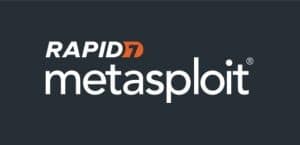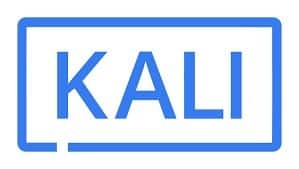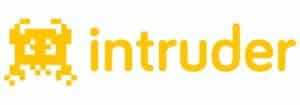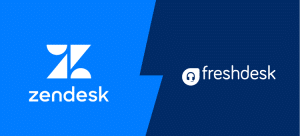If we study history, the relationship between crime and technology is old. The hardware used to implement new technological developments has changed over time. Still, the basic principles of crime remain the same, especially where technology is embedded in the chain of trust.
The cat-and-mouse game between the offender and the investigator is ongoing. Cybercriminals continue to exploit new technologies, and investigators use the same technologies to identify and prevent future cyber-attacks.
Though cyber-attacks were initiated locally, modern attacks on systems or individuals are planned across the nations. Attacks are becoming increasingly unique, notorious, and developed with a distinct strategic advantage.
Today we will look at the top five worst cyber-attacks of all time. There are many ways to rank awful cyber-attacks. The below listed are those cybercrimes that affected the most records, caused loss of the highest amount of dollars, were repeated, and the most flagrant.
5 Most Notorious Cyber-Attacks in History and Their Impact on Businesses
1. Yahoo - The Most Records Stolen
Hackers directly targeted Yahoo’s database of email users in 2013. Verizon dug into Yahoo’s records during due diligence for the acquisition in 2014 and discovered the data breach. Nonetheless, Verizon exposed more than Yahoo revealed.
Technique
The cyber-attack was designed with a spear-phishing email sent to Yahoo’s employees. Still, it’s unsure of the number of employees targeted, even if one employee opens the link, which was enough for hackers to see the result they planned.
Impact on business
-
Financial Loss
According to the first report, 500 million accounts were affected. The stolen data includes account names, email addresses, telephone numbers, users’ date of birth, passwords, and in a few cases, encrypted or unencrypted security questions and answers. A further study explored that all existing Yahoo accounts were affected by the data breaches.
Yahoo lost 350 million dollars as Verizon dropped that much of its purchase value. The settlement of many lawsuits caused more losses.
-
Compliance
Yahoo violated the IT compliance laws by delaying state and federal data breach notification, which resulted in multiple class action lawsuits. There is no more significant damage to an organization than harm to its prestige.
-
Loss of customers
Customers will not trust companies where their data is not protected. Cyber-attacks reveal a company’s data security status. Consequently, Yahoo lost long-time users, traffic on the site, and ad revenue by offering low prices.
2. Epsilon - Greatest Financial Loss
Epsilon is an international data broker company that became a victim of hackers in 2011, recording the most expensive cyber-attack in history. Out of 50 clients affected in this data breach that included top brands of retailers, financial institutions like JPMorgan Chase & Co., Best buy co., etc.
For instance, one of their clients, Dallas company, was providing email services to other 2500 companies.
Technique
An attempt was made to gain unauthorized access to Epsilon’s email system. Phishing emails targeted 100 service providers. These targets received emails with content that mentioned employee names and seemed to be receiving from friends or a co-worker.
The phishing attacks were sent to the targets from different systems like online greeting card sites through a botnet. When a person opens the email and clicks on the given link, it takes them to the malicious site, where malware is downloaded to the user’s system.
Impact on business
-
Financial Loss
Epsilon paid approximately 225 million dollars alone. Its 75 infected clients paid an estimated 410 million dollars. Including forensic audit, litigation, monitoring, and business loss due to cyber-attacks account for three to four billion dollars. The data breach involved 250 million records.
-
Compliance
Epsilon was warned about the expected potential hacks and to tighten up their security, so they quickly recovered from the cyber-attack and impacted only 3% of their client base. They were following regular compliance notifications.
-
Loss of clients
Epsilon lost a 45 million dollar business due to losing clients in droves. The breach was so critical that the Secret Service was also involved.
3. Yahoo - The Repeat Offender
One of the most repeated cybercrimes was made by Yahoo. As per the record, hackers hit Yahoo twice, first in 2013 and second in late 2014.
Yahoo struck multiple times with cyber-attacks to the extent that it affected every one of its three billion email account users. That shows 100% failure.
The most irresponsible attempt was that Yahoo did not inform their users, which put them in more trouble. Yahoo delayed notification of the second data breach until 2016. It was scary when it came to the public’s knowledge that their clients’ data was being sold on the dark web.
Until then, the king of search engines in those times maintained silence and said they were unaware of the cyber-attack and loss of their data.
If Yahoo had reported a data breach in 2014 that continued till 2016, it could have protected a significant portion of its users’ data. They could have requested their users to simply reset their passwords and could prevent losing their clients, legacy, and business.
4. Court Ventures - The Biggest Insider Job
It is distressful when cybercriminals come from the back door and steal the company’s client data. But it’s unacceptable when they hit the company’s database from the front door and buy their users’ sensitive data. Court ventures now owned by Experian sold clients’ data to cybercriminals that ran identity theft businesses for a few bucks. The motive was pure profit.
Technique
Hieu Minh Ngo, a 25-year-old Vietnamese, purchased access to clients’ sensitive data, including social security numbers, from Court Ventures. He sold these data to 1300 cybercriminals in the identity theft business. US court sentenced him to 13 years of prison for this role.
Impact on business
-
Financial loss
Though the actual loss is unknown, the fact is that 14000 consumers became victims of this cyber-attack to income tax fraud that cost a total amount of 65 million dollars. According to reports, around 200 million consumer data records were sold and accessed by hackers. Experian affirmed that there is no compromise for the lost data.
-
Compliance
The Secret Service notified Experian, who cooperated with the law of enforcement. As it was a front-door cyber-attack, the issue was due diligence in screening the clients to whom Court Ventures sold clients’ data.
-
Experian acquired Court Venture
Both the companies sued one another. Finally, consumers filed a class action lawsuit against the Court venture for violating Fair Credit Reporting Act. Experian was announced as a new Court Venture owner after more than a year-long investigation and retrieving information from US Info Search.
5. United States Office of Personnel Management - The most Flagrant
A cyber-attack on the US government targeted their personnel records. The decryption of SSL traffic for data integrity led to the discovery of brilliantly installed malware. An attack was planned with high coordination and funded a considerable amount. Cybercriminals hacked the government contractor to steal government data and executed successful data breaches on OPM.
Technique
On May 7, 2014, a Chinese group name X2 used OPM’s stolen credentials from Key Point to install malware for entering through the backdoor and taking hold of government data. Their entry to the personnel data was undetected, and the “big bang” didn’t deny X2’s access.
X2 used faux McAfee security files to transfer data to Steve Rogers’ site. The secret hackers who orchestrated multiple notorious cyber-attacks use avenger’s name to hide their real identity.
Impact
-
Loss of trust
The most significant damage was losing people’s trust in the agency and the government in large to protect sensitive data. While found no specific link to a particular group of hackers, it was overwhelming agreement that OPM was hacked with the help of state-sponsored attackers working for the Chinese government.
This cyber-attack was considered an Advanced Persistent Threat (APT), where the motive was to target the US economy, politics, and military. The team worked 24-by-7 to destroy malware uploaded on ten systems, including the Admin server.
Hackers got access to millions of employee files, including their fingerprints. The scary part was that investigators did not know where the data went and who had it. At last, OPM’s CIO and the director resigned.
-
Compliance
OPM failed to prioritize its funding for cyber security compared to other agencies. They lack the structure to implement effective IT compliance policies. They were unable to implement a basic setup like two-factor authentication for giving access to their sensitive personnel data.
According to OPM, they are preventing 10 million hacks every month along history of failures in managing security infrastructure.
Top 10 Most Robust Cyber Security Software Tools
Every business leader in the 21st century believes cyber security is essential to their operation. It’s wisdom to invest in appropriate security tools than losing valuable data, business downtime, and loss of customer loyalty.
Different types of security tools are developed by looking at the diverse approach to cyber-attacks, which includes
- Packet sniffer
- Antivirus software
- Firewall
- Encryption
- Network security
- Network defense
- Penetration testingNetwork vulnerability testing
Companies can choose either paid or open source software tools. In many cases, leaders prefer hybrid for not keeping any loop. Here is the list of the best ten cyber security tools to prevent your data from cyber-attacks. You can evaluate the best fit for your IT infrastructure.
1. Wireshark
Wireshark is a tool used for analyzing networks. It helps to capture and browse the traffic on the networks in real-time. Due to its rich and powerful features, Wireshark is considered the most popular tool of its kind. It is compatible with most platforms like Windows, Linux, and UNIX.
With Wireshark, you can easily detect network errors, including latency, suspicious activity, and packet losses.
Prime Features:
- Supported by hundreds of protocols and more, keep added
- Real-time capture and offline analysis
- Classic three-pane packet browser
- Rich VoIP analysis
- Allows read/write option for various file formats that are captured
- Enables to read live data from Ethernet
- Decryption is possible for many protocols
- Output can be exported to file extensions like XML, PostScript, CSV, or plain text.
- Capture files are compressed using gzip and can be decompressed using fly.
2. Metasploit
The world’s most used penetration testing framework is Metasploit. They have collaborated with the open source community and Rapid7.
It helps the company’s security teams to do more than just verify vulnerabilities, manage security, and improve security awareness. Using Metasploit, defenders stay one step ahead of the game because it empowers and equips them. Known as the hacking tool, Metasploit is used to test the security score of any network, server, or web application.
Prime Features:
- The tool is used to identify the system weaknesses in networks where it’s harder to defend and get the entry by taking advantage of that flaw.
- It enables penetration workflow to divide into smaller, more manageable tasks.
- Metasploit performs security assessments and validity checks on databases with a web-based interface.
- A tool discovers a new vulnerability in network security, if any.
3. Cain and Abel
Cain and Abel are one of the early tools in the market for protection against cyber-attacks. Microsoft Windows vulnerabilities were previously checked with it. With the help of network sniffing, the tool recovers passwords and cracks them using dictionary attacks. The tool can analyze routing protocol, which enables it to determine data packets that are most likely to hack.
Primary Features:
- Increase packet capture speed through wireless packet injection
- Record VoIP communications
- Decode scrambled passwords
- Reveal password boxes
- Uncover cached passwords
- Dump-protected storage passwords
- Calculating and ability to crack multiple hashes
4. Kali Linux
Kali Linus is the first penetration testing distribution tool with more than 300 features for securing websites and servers from cyber-attacks. The tool is specifically helpful in securing a company’s databases from cybercrimes and online threats.
Prime Features:
- Kali Linux supports many ARM devices with ARM repositories integrated with the main version.
- Though written in English, Kali allows genuine multilingual support, allowing more users to work in their local languages and locate the required tool.
- Because of its integrity, live-build gives much flexibility in modifying Kali Linux ISO for specific needs.
- Live USB boot enables the installation of Kali on USB devices without touching the host operating system.
- Kali comprises more than 600 penetration tools pre-installed.
5. Intruder
Using the Intruder, you can quickly detect cyber security weaknesses in your digital infrastructure to prevent expensive cyber-attacks. It’s an effective tool designed to monitor internet-facing systems for security threats, so it’s also most suited for small businesses.
With more than 900 security checks, Intruder can scan the IT system for application bugs, missing patches, or weak encryptions.
Prime Features:
- Assessment management
- Asset discovery and tagging
- Patch management
- Risk assessment and management
- Incident management
- Vulnerability scanning, assessment, and protection
- Network scanning
- Application security
- Security auditing
- Access controls/permissions
6. Bitdefender
Bitdefender is the global leader in providing the best services for threat prevention, detection, and response solution against cyber-attacks. A tool is used by more than 38% of comprehensive solutions. Bitdefender has security features, including social network protection, online banking security, and firewall privacy with anti-phishing. The software is designed to stop malware attacks. It supports Windows, Apple, and Android devices.
Prime Features:
- Bitdefender’s multi-layer protection keeps your system safe from cyber threats.
- Its antivirus Plus version responds promptly against e-threats without compromising the system’s performance.
- It takes care of online privacy as well as personal information.
- Bitdefender is a complete security solution for devices at home and in businesses.
- Provides real-time data protection for preventing data breaches
7. Aircrack-ng
Aircrack-ng consists of a set of features to analyze Wi-Fi networks for weaknesses. In addition to monitoring Wi-Fi security, it captures data packets and exports them to text files for further analysis. It is possible to capture and inject WiFi cards to verify their performance.
Prime Features:
- Aircrack-ng is supported on Linux, Windows, OpenBSD, FreeBSD, and eComStation platforms.
- Its scan visualizing feature allows the system to filter, sort out and analyze the scanned data.
- Aircrack-ng can detect PMKID.
- It supports WPA3 and OWE with rates of 802.11 n/ac and is not limited to 54MB.
8. Mimecast
Mimecast is a leading cloud-based security tool that simplifies enterprise email management by providing them security, continuity, and archiving cloud services through protecting email, ensuring access, and simplifying tasks.
Prime Features:
- Mimecast secures email gateway, browse isolation, and protects against targeted threats.
- The service provides Cyber Graph with email tracker protection, machine learning, and identity graph functionality.
- Mimecast protects the email perimeter from threats and remediates threats.
- By adding end-user empowerment and training, a tool protects unsuspecting employees from divulging essential data.
9. Snort
Snort is a well-known open-source network intrusion detection system (IDS). Essentially, it is a packet sniffer that monitors network traffic in real-time. It checks every packet for dangerous payloads.
Prime Features:
- Using Snort, network admins can detect DoS attacks, CGI attacks, stealth port, and buffer overflows.
- Snort creates rules that identify malicious packets and defines malicious network activities.
- The software analyzes and logs data packets in real-time.
- Snort blocks malicious network access requests through firewall protection.
10. Nessus
With Nessus, a remote security scanning tool, you can scan any connected computer and get an alert that if any vulnerabilities are discovered, malicious hackers can exploit that. With over 20000 worldwide clients, Nessus is trusted by more professionals compared to other security and compliance products.
Prime Features:
- Accurate and high-speed asset discovery
- Targeted email notifications of scan results, remediation recommendations, and scan configuration improvements
- Vulnerability scanning that includes IPv4/IPv6/hybrid networks
- Credentialed scanning for system hardening & missing patches
- Offline configuration auditing of network devices
- Sensitive content auditing and control system auditing
- Fulfill required government and corporate IT regulations
Conclusion
Cybercrime takes off with extensive use of social media. Identity theft is rising as people put their personal information in their profile databases. Software tools are designed to prevent cyber threats and avoid data breaches.
The leading software companies listed above offer different types of cybersecurity tools. They have free as well as premium and paid features. Depending on the cyber-attack a company can face, it can select one or more software tools that meet its security requirements.
IT services can be handled either internally by the company or outsourced. Companies providing cybersecurity offer 24/7 outsourcing IT help desk services to their clients to give them instant assistance.

















